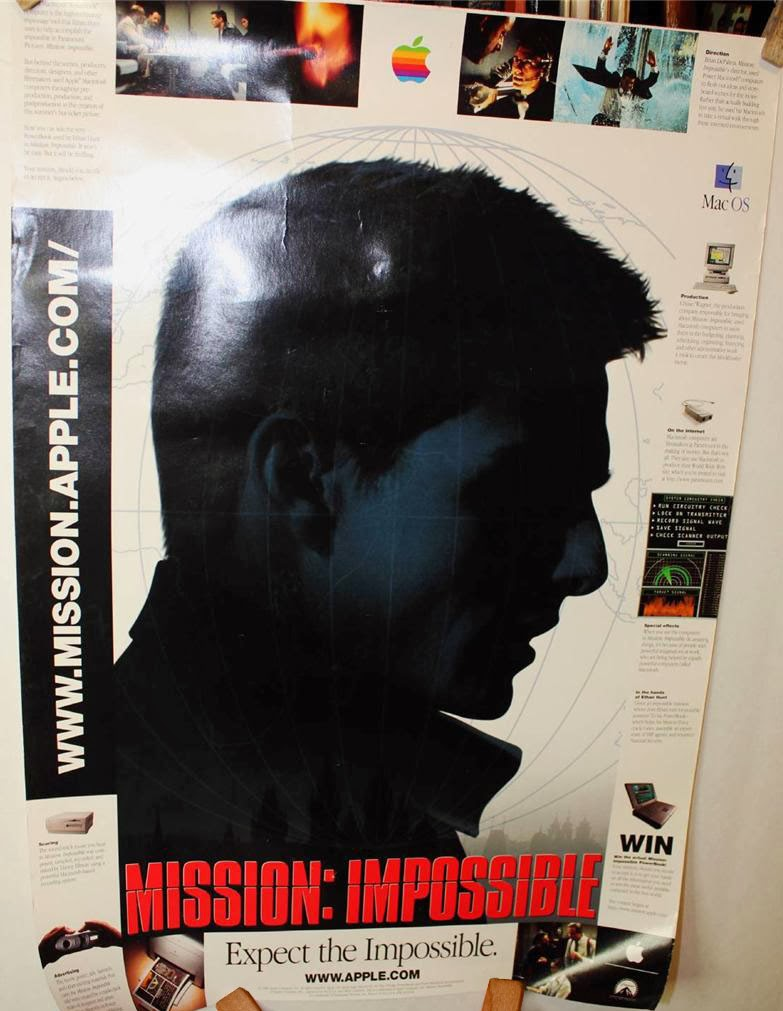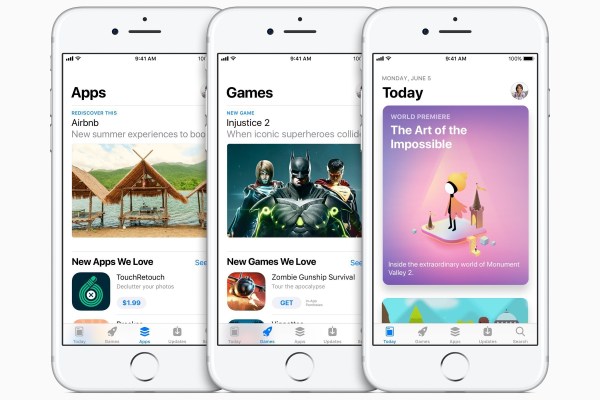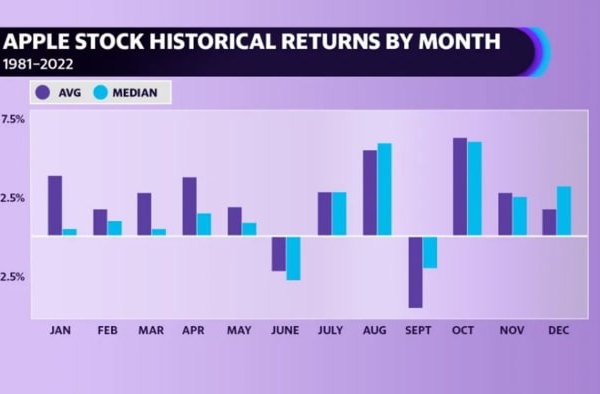Apple Mission: Impossible Promotion: A Marketing Disaster

In April 1996, Apple launched its ambitious Mission: Impossible promotion, a $15 million campaign designed to capitalize on the release of the film starring Tom Cruise. This marketing effort aimed to spotlight the PowerBook 5300, the very device featured in the movie, at a time when Apple was struggling under the weight of a staggering $740 million quarterly loss. The Mission: Impossible marketing tie-in was a bold move to revitalize the brand’s image, showcasing innovative technology that was, unfortunately, overshadowed by production issues. Despite its promising premise, the promotion faced a multitude of challenges, including the outdated technology displayed and the timing of the PowerBook’s release. As a result, while attempting an impossible mission to rebound from financial turmoil, Apple’s venture into high-profile movie tie-ins revealed both the excitement and perils of tech product placements in cinema.
The 1996 promotional campaign associated with the action film Mission: Impossible represented a significant moment for Apple, particularly through its marketing of the PowerBook series. This advertising strategy sought to elevate Apple’s presence in the competitive tech landscape, yet was marred by challenges such as delayed product availability and unfavorable technical depiction in the movie. Tom Cruise’s iconic role in the film often included the usage of the PowerBook, which initially presented an opportunity for Apple to rejuvenate its brand image amidst their fiscal difficulties. However, the subsequent flaws and the high price point of the PowerBook 5300 highlighted the pitfalls of product placement within the entertainment industry. Ultimately, this marketing endeavor not only aimed to generate buzz for the Apple PowerBook but also underscored the complexities involved in aligning technology with blockbuster films.
The Impact of Apple’s Mission: Impossible Marketing Campaign
In April 1996, Apple launched an ambitious $15 million marketing collaboration with the blockbuster film ‘Mission: Impossible’, featuring Tom Cruise. The campaign aimed to revitalize Apple’s image during a tumultuous period marked by substantial financial losses. The PowerBook 5300, prominently displayed in the film, was an attempt to associate Apple’s brand with high-octane suspense and adventure. Unfortunately, the timing was misguided, as the company had just reported an unprecedented quarterly loss, highlighting its struggles in the competitive tech market. This ambitious cross-promotion was not just about increasing PowerBook sales, it was also about reigniting consumer interest in the brand itself, making the ‘Mission: Impossible’ campaign a pivotal moment in Apple’s history.
Despite the excitement surrounding the film and its marketing tie-in, the ‘Mission: Impossible’ campaign faced numerous challenges that hindered its success. The PowerBook 5300, although featured prominently in the film, was not available for purchase at the premiere, leaving many potential buyers disappointed. Moreover, the product placement suffered from a lack of creative control, resulting in an outdated representation of Apple’s technology compared to its competitors. Such missteps meant that even with a significant investment in advertising, the actual sales figures did not reflect the anticipated return, making the campaign a cautionary tale of marketing gone awry.
Challenges Faced by Apple During the 1996 Campaign
The ‘Mission: Impossible’ promotion serves as a striking example of how missteps in marketing strategy can lead to unfavorable results. Apple began the campaign with high hopes amidst a backdrop of financial distress. The company’s quarterly loss of $740 million was a significant setback, particularly when more than half of this loss stemmed from unsold inventory. The decision to link Apple with a high-profile film was intended to bolster the brand’s appeal and create urgency around the PowerBook 5300. However, the reality was a campaign marred by logistical nightmares and product issues, which contributed to a significant setback for the company.
In addition to operational challenges, Apple’s attempt to integrate its technology into the film was hindered by the timing of their partnership with Paramount Pictures. By the time the deal was finalized, the budget constraints and production timelines limited Apple’s ability to influence how their product was portrayed. As a result, the command-line interface depicted in ‘Mission: Impossible’ showcased an older version of Apple’s technology, juxtaposed unfavorably with the modernity of Windows 95. This misalignment not only impacted the perception of the PowerBook but also diminished its desirability as a cutting-edge personal computing device.
The Legacy of the PowerBook 5300 and Mission: Impossible
The PowerBook 5300 was positioned as a flagship product that could reclaim Apple’s innovative reputation, but the realities of its launch told a different story. Following the debut of the ‘Mission: Impossible’ film, a series of technical issues began to surface, including safety controversies involving overheating units that prompted recalls. This series of events diminished consumer confidence and highlighted the difficulties Apple faced during this turbulent period. Instead of becoming a symbol of cool technology as envisioned, the PowerBook became synonymous with mismanaged marketing and operational failures.
Ultimately, the failures of the PowerBook 5300 during the ‘Mission: Impossible’ promotion led to a reassessment within Apple. The campaign’s shortcomings, including the high price point of $6,500 and the perception challenges due to outdated technology, forced Apple to reconsider its strategies. In retrospect, while 1996 was a low point for Apple, it laid the groundwork for transformative changes that would follow, including a rejuvenation of the brand that would eventually welcome Steve Jobs back to the company, marking the beginning of an era defined by innovation and success.
Tom Cruise and Apple: A Hollywood Connection
The collaboration between Apple and Tom Cruise in the ‘Mission: Impossible’ film opened doors to a fascinating intersection of technology and entertainment. As the charismatic lead, Cruise embodied the type of aspirational figure that Apple sought to associate with its powerful line of products. By featuring the PowerBook prominently in a thrilling narrative, Apple aimed to create an emotional connection that would resonate with technology enthusiasts and moviegoers alike. This marketing strategy was designed to project Apple as an innovative powerhouse able to keep pace with Hollywood’s most high-profile productions.
However, despite the star power of Tom Cruise, the execution of the partnership was flawed. The promotional campaign’s reliance on the film’s excitement did not translate to immediate sales and market impact as expected. The disconnect between the film’s cinematic representation of Apple products and the actual consumer experience raised questions about the effectiveness of product placement in an era where consumers were becoming increasingly discerning. While Cruise’s role undoubtedly lent prestige to the PowerBook, the realities of its launch yielded a contrasting narrative far removed from the glamor of the film.
Controversies Surrounding the PowerBook 5300 Launch
The launch of the PowerBook 5300, initially intended to showcase Apple’s technological advancements, soon became marred by controversy and public scrutiny. Just as the ‘Mission: Impossible’ film hit theaters, news broke of serious quality control issues resulting in some units catching fire. This revelation was not just a PR nightmare but also led to a full recall of the initial batch of 100 units sold, tarnishing Apple’s reputation for reliability. By failing to deliver a safe and reliable product, Apple faced a significant erosion of trust among its consumer base.
These operational blunders were compounded by the fact that the PowerBook 5300’s innovation was outshone by the glitches and failures witnessed by early adopters. As the laptop advertised in such a high-profile way was ultimately unavailable and problematic, potential customers were disillusioned. Retailers were frustrated as well, as their showcase model provided an imperfect representation of what Apple aimed to symbolize through the ‘Mission: Impossible’ association. The outcry over the project’s handling demonstrated the fragility of brand trust, especially during a period when the tech landscape was rapidly evolving.
Reflections on Apple’s Mission: Impossible Era
The ‘Mission: Impossible’ promotion unveiled Apple’s vulnerability during a pivotal time in the company’s history. While the intention was to craft a narrative of excitement around the PowerBook 5300, the reality of operational failures and mismanagement led to one of the company’s most challenging years. In essence, the extravagance of the campaign did little to mitigate the considerable financial challenges Apple was facing at that time. Reflecting on these events underscores the importance of aligning marketing strategies with product readiness in today’s fast-paced technology sector.
Despite the setbacks of the ‘Mission: Impossible’ campaign, it ultimately served as a catalyst for change within Apple. The failures prompted strategic re-evaluations that contributed to the company’s eventual resurgence after the late 1990s. As a memorable chapter in Apple’s narrative, this promotion continues to be a reference point in discussions about the importance of coherence between advertising messages and product realities in the tech industry. In hindsight, the lessons learned were invaluable, shaping Apple into one of the most formidable players in the market.
Lessons Learned from Apple’s 1996 Marketing Strategies
Apple’s 1996 marketing strategies, particularly the ‘Mission: Impossible’ promotional campaign, impart crucial lessons for businesses operating within competitive landscapes. At the core of the campaign’s failure was the disconnect between the marketing narrative and the actual product performance. For marketers, the importance of ensuring product readiness before launch cannot be overstated; if the consumer experience does not align with advertising promises, disillusionment is inevitable. Apple’s experience serves as a cautionary tale for tech companies today who may overlook the significance of timing and preparedness in their promotional endeavors.
Moreover, the PowerBook 5300’s tumultuous launch showcased the risks associated with late-stage product placements in media. Collaborations with influential figures, such as Tom Cruise, bring excitement and visibility, but they can also amplify the consequences of oversight. Businesses must prioritize proactive engagement in their partnerships, ensuring that they can exert control over how their technology is represented in popular culture. Ultimately, the lessons from Apple’s mission to integrate technology with entertainment underscore the need for robust product quality and strategic foresight.
The Role of Innovation in Apples Comeback Post-Mission: Impossible
After the fallout from the ‘Mission: Impossible’ promotion and the subsequent turmoil, Apple’s path to recovery hinged on innovative product development and strategic leadership. The turmoil experienced during the 1996 campaign underscored the necessity for transformative changes within the company. By leveraging the acquisition of NeXT and welcoming back Steve Jobs, Apple returned to its roots of innovation, creating ground-breaking products that resonated in a rapidly evolving market. This talent infusion catalyzed a revival that would redefine Apple’s identity in the years that followed.
In the years post-campaign, Apple shifted its focus back to delivering user-friendly and powerful products, setting the stage for the iMac and, eventually, the iPhone. This shift towards innovation and design prowess enabled Apple to rise from the ashes of its past missteps, showcasing that even high-profile marketing collaboration failures can lead to productive introspection and change. The transformation that followed the ‘Mission: Impossible’ promotion illustrated how a company could pivot towards a successful and sustainable future, highlighting the potential for redemption in the face of adversity.
Frequently Asked Questions
What was the goal of the Apple Mission: Impossible promotion in 1996?
The Apple Mission: Impossible promotion aimed to boost the company’s image and promote the PowerBook 5300 laptop used by Tom Cruise’s character in the film. With a $15 million budget, Apple sought to create a connection between the movie’s excitement and the appeal of its technology.
How did the Apple Mission: Impossible marketing campaign affect sales of the PowerBook 5300?
Unfortunately, the Apple Mission: Impossible marketing campaign faltered as the PowerBook 5300 was not available for purchase when the film premiered. Moreover, the devices faced production issues and recalls, leading to disappointing sales and impacting the campaign’s effectiveness.
What challenges did Apple face during the Mission: Impossible marketing campaign?
The Apple Mission: Impossible promotion was challenged by significant quarterly losses, production issues with the PowerBook 5300, and a late deal with Paramount Pictures that limited Apple’s influence on the film’s technology depiction, making the Mac appear outdated.
Did the PowerBook 5300 gain popularity through its appearance in Mission: Impossible?
Despite its prominent feature in Mission: Impossible, the PowerBook 5300 did not gain the expected popularity due to its delayed release, recalls, and the high price tag, which deterred many potential buyers.
How did the Mission: Impossible promotion impact Apple’s image?
The Apple Mission: Impossible promotion was designed to enhance the company’s image amidst its struggles, but the missteps in execution ultimately resulted in further difficulties, marking a tough time for Apple during the 1990s.
Why was the PowerBook 5300 portrayed with a command-line interface in the film?
The PowerBook 5300 was shown using a command-line interface in Mission: Impossible because the deal with Paramount Pictures was finalized too late for Apple to influence the script. This portrayal made the PowerBook appear outdated compared to contemporary Windows operating systems.
What technological issues did the PowerBook 5300 face during its launch?
The PowerBook 5300 encountered serious technological issues, including fires in production units and a recall of early models. This compounded the challenges faced by the Apple Mission: Impossible promotion, as the laptops were not readily available for fans of the film.
How did the Apple Mission: Impossible promotion reflect the company’s struggles in the 1990s?
The Apple Mission: Impossible promotion highlighted Apple’s struggles in the 1990s, including significant financial losses and product issues. This campaign, meant to revitalize interest in Apple products, unfolded amidst a historical low point for the company.
What was the final outcome of the Apple Mission: Impossible campaign?
Though the Apple Mission: Impossible campaign did not achieve its intended success, it coincided with a turning point for the company, eventually leading to significant improvements in Apple’s product and marketing strategies in the years that followed.
Is Apple’s Mission: Impossible promotion still relevant today?
Yes, the Apple Mission: Impossible promotion remains a relevant case study in marketing history, illustrating the challenges of product placement and the impact of high-profile partnerships on brand image, particularly in the context of technology and entertainment.
| Aspect | Details |
|---|---|
| Promotional Budget | $15 million for Mission: Impossible tie-in |
| Launch Date | April 18, 1996 |
| Apple’s Financial Status | Reported largest quarterly loss of $740 million before the campaign |
| Promotion Goal | To enhance Apple’s image and promote the PowerBook used in the film |
| Website Launch | “Mission: Impossible — The Web Adventure” website introduced |
| Product Placement Issues | PowerBook’s outdated technology and scripting issues |
| Product Availability | PowerBook 5300 not available at film premiere; product recalls due to fire incidents |
| Historical Impact | Marked a turning point in Apple’s recovery leading to Steve Jobs’ return |
| Cost of PowerBook 5300 | Top model priced at $6,500 in 1996, approximately $13,000 adjusted for inflation |
Summary
The Apple Mission: Impossible promotion aimed to revitalize Apple’s image in 1996, coinciding with one of the company’s most challenging financial periods. Despite a grand plan and significant investment, the promotional efforts were marred by issues with product placement, delayed product availability, and technical misrepresentation in the film. However, the experience laid the groundwork for positive changes in the company, leading to a resurgence that would ultimately reshape Apple’s future.
You may also like

iOS App Store Success: A Milestone in Digital Distribution


First Email from Space: The Macintosh Portable’s Legacy
Archives
Calendar
| M | T | W | T | F | S | S |
|---|---|---|---|---|---|---|
| 1 | 2 | 3 | 4 | 5 | 6 | 7 |
| 8 | 9 | 10 | 11 | 12 | 13 | 14 |
| 15 | 16 | 17 | 18 | 19 | 20 | 21 |
| 22 | 23 | 24 | 25 | 26 | 27 | 28 |
| 29 | 30 | 31 | ||||